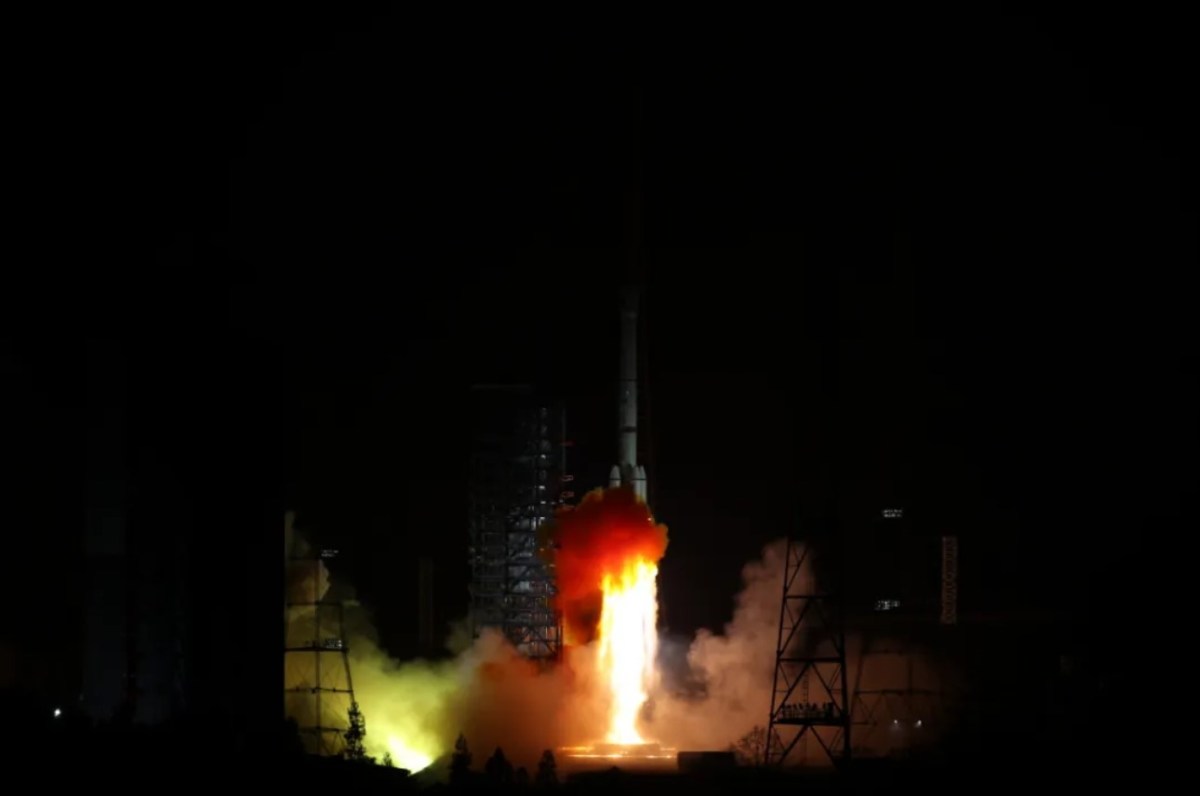HELSINKI — China sent a classified experimental technology satellite into orbit Thursday, adding to a series of spacecraft recently sent towards geostationary orbit. A Long March 3B rocket lifted off at 10:32 a.m. Eastern (1532 UTC) Jan. 23 from the Xichang Satellite Launch Center, southwest China. The China Academy of Launch Vehicle Technology (CALT) announced launch success in a statement under an hour after liftoff, revealing the previously undisclosed payload to be communication technology experiment Satellite-14, or Tongxin Jishu Shiyan-14 (TJS-14) and headed for geostationary orbit (GEO).The TJS-14 satellite will be mainly used for satellite communications, radio and television, data transmission and other services, and to carry out technical tests and verifications, according to Chinese state media reports. No images of the satellite were published.TJS satellites are believed by outside observers to fulfill a range of functions, perform technology tests and test out new tactics, techniques and procedures. These include electronic Intelligence (ELINT), technology to missile detection and possibly early warning systems, new sensors, possible inspector satellites and experiments on advanced communications or signals intelligence.The TJS-3 satellite, launched in 2018, released a subsatellite which carried out subsequent maneuvers indicating it was a subsatellite capable of coordinated movements with TJS-3. The main satellite later made close approaches to U.S. satellites. The activities suggest uses beyond those of communications, as stated by the terse Chinese media descriptions.The satellite series could support the People’s Liberation Army (PLA) activities and capabilities in space, provide critical infrastructure for missile defense systems, and enhance China’s capacity for space-based communications.The launch of TJS-14 follows a similar mission in December which sent TJS-13 towards GEO. China’s first launch of 2025 sent the Shijian-25 satellite to geostationary orbit to test on-orbit refueling and mission extension technologies. That satellite is coplanar with Shijian-21, which launched in 2021 and towed a dead satellite to a high graveyard orbit.CALT is a major subsidiary of the China Aerospace Science and Technology Corporation (CASC) and provided the Long March 3B rocket for the launch. The Long March 3 series will “enter a new round of high-density launch period,” in 2025, according to CALT. It will launch the Tianwen-2 mission to sample a near-Earth asteroid around May, as well as commercial missions.The launch of TJS-14 was China’s second launch of the day. A Long March 6A rocket launched a fourth batch of 18 Qianfan/Thousand Sails satellites into polar orbit early Thursday. There are now 72 satellites in orbit for the planned 14,000-satellite megaconstellation. Thursday’s launches could be the last Chinese orbital launch activity of the Year of the Dragon. A pause will likely run up to and beyond the Lunar New Year Jan. 29. CASC is yet to publish its plans and projected launch activity for 2025. Last year the country, including commercial launch activities, targeted around 100 launches. It reached 68 orbital launch attempts, surpassing the previous national record, set in 2023, by one launch.
By Tyler Mitchell
Tyler is a renowned journalist with years of experience covering a wide range of topics including politics, entertainment, and technology. His insightful analysis and compelling storytelling have made him a trusted source for breaking news and expert commentary.
